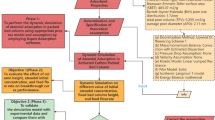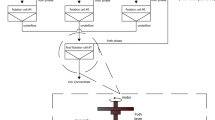Abstract
This study proposes a methodology for diagnosing the degree of performance degradation of the adsorbent in pressure swing adsorption (PSA) plants using a one-dimensional simulator and a time-series deep learning algorithm. First, a 1D PSA simulator was developed using mathematical models and validated with previously published experimental data. The behavior change of the PSA plant according to the performance degradation was trained using a deep learning algorithm based on the developed simulator. The model combines the 1D convolutional neural network and long-short-term memory (LSTM) network. The prediction of the degradation degree of the internal adsorbent was then presented using a pretrained neural network. The developed methodology demonstrates a mean squared error lower than 10−6 when predicting the degree of adsorbent degradation from the adsorption-bed-temperature time-series profiles with an example. The methodology can be used to predictive maintenance strategy by identifying PSA performance degradation in real time without stopping operation.
Similar content being viewed by others
Abbreviations
- Aw :
-
wall cross-sectional area [m2]
- C:
-
diffusion time constant [sec−1]
- Cpg, Cps, Cpw :
-
heat capacity of gas, pellet and wall [J/kg K]
- DL :
-
axial dispersion coefficient [m2/s]
- hi :
-
internal heat transfer coefficient [J/m2 K s]
- ho :
-
external heat transfer coefficient [J/m2 K s]
- ΔH:
-
heat of adsorption [J/mol]
- KL :
-
axial thermal conductivity [J/m K s]
- kd :
-
adsorbent degradation factor [-]
- L:
-
bed length [m]
- P:
-
total pressure [Pa]
- q, q*, \(\overline {\rm{q}} \) :
-
adsorption loading amount, adsorption isotherm, average concentration [mmol/g]
- R:
-
gas constant [8.31447 J/mol K]
- RP :
-
pellet radius [m]
- RBi :
-
bed inner radius [m]
- RBo :
-
bed outer radius [m]
- t:
-
time [sec]
- Tamb :
-
ambient temperature [K]
- T:
-
bed temperature [K]
- Tw :
-
wall temperature [K]
- u:
-
interstitial velocity [m/s]
- yi :
-
mole fraction of species i in gas phase [-]
- z:
-
axial distance in bed from the feed gas inlet [m]
- ADS:
-
adsorption step
- BD:
-
blowdown step
- DEQ:
-
depressurizing pressure equalization step
- PEQ:
-
pressurizing pressure equalization step
- PR:
-
pressurization step
- PG:
-
purge step
- LSTM:
-
long-short term memory
- α :
-
particle porosity [-]
- ε :
-
voidage of adsorbent bed [-]
- ε t :
-
total void fraction [-]
- μ :
-
viscosity [Pa sec]
- ρ g, ρp, ρB, ρw :
-
density of gas, pellet, bulk and bed wall [kg/m3]
- ω :
-
linear driving force (LDF) coefficient [sec−1]
References
L. T. Biegler, L. Jiang and V. G. Fox, Sep. Purif. Rev., 33(1), 1 (2005).
D. W. Siderius, V. K. Shen, R. D., III Johnson and R. D. van Zee, NIST/ARPA-E Database of Novel and Emerging Adsorbent Materials, NIST Standard Reference Database Number 205; National Institute of Standards and Technology: Gaithersburg, MD, http://adsorbents.nist.gov (retrieved July 07, 2023).
C. W. Wu and S. Sircar, Adsorption, 25, 669 (2019).
M. Luberti and H. Ahn, Int. J. Hydrogen Energy, 47(20), 10911 (2022).
A. D. Wiheeb, Z. Helwani, J. Kim and M. R. Othman, Sep. Purif. Rev., 45(2), 108 (2016).
M. D. Sees, T. Kirkes and C. C. Chen, Comput. Chem. Eng., 147, 107235 (2021).
M. A. Makarem, M. Mofarahi, B. Jafarian and C. H. Lee, Comput. Chem. Eng., 121, 483 (2019).
J. Uebbing, L. T. Biegler, L. Rihko-Struckmann, S. Sager and K. Sundmacher, Comput. Chem. Eng., 151, 107340 (2021).
R. Rajasree and A. S. Moharir, Comput. Chem. Eng., 24(11), 2493 (2000).
A. Streb and M. Mazzotti, Comput. Chem. Eng., 166, 107974 (2022).
F. G. Wiessner, Gas Sep. Purif., 2(3), 115 (1988).
C. J. Heard, L. Grajciar, F. Uhlík, M. Shamzhy, M. Opanasenko, J. Čejka and P. Nachtigall, Adv. Mater., 32(44), 2003264 (2020).
R. Razzaq, C. Li and S. Zhang, Fuel, 113, 287 (2013).
H. Ahn, J. Yang and C. H. Lee, Adsorption, 7, 339 (2001).
K. O. Iwuozor, J. O. Ighalo, E. C. Emenike, L. A. Ogunfowora and C. A. Igwegbe, Curr. Res. Green Sust. Chem., 4, 100179 (2021).
S. Kulkarni and J. Kaware, Int. J. Innov. Sci. Eng. Technol., 1(8), 61 (2014).
J. G. Jee, M. B. Kim and C. H. Lee, Chem. Eng. Sci., 60(3), 869 (2005).
C. H. Lee, J. Yang and H. Ahn, AIChE J., 45(3), 535 (1999).
J. P. Mota and A. J. Rodrigo, Ind. Eng. Chem. Res., 39(7), 2459 (2000).
J. H. Yun, D. K. Choi and H. Moon, Chem. Eng. Sci., 55(23), 5857 (2000).
M. B. Kim, J. H. Moon, C. H. Lee, H. Ahn and W. Cho, Korean J. Chem. Eng., 21, 703 (2004).
I. F. Macdonald, M. S. El-Sayed, K. Mow and F. A. L. Dullien, Ind. Eng. Chem. Fundam., 18(3), 199 (1979).
N. S. Raghavan, M. M. Hassan and D. M. Ruthven, Chem. Eng. Sci., 41(11), 2787 (1986).
C. T. Choi and H. Wen-Chung, Chem. Eng. Sci., 49(1), 75 (1994).
L. Guo, W. A. Jury, R. J. Wagenet and M. Flury, J. Contam. Hydrol., 43(1), 45 (2000).
T. Paszko and M. Jankowska, Ecotox. Environ. Safe., 161, 584 (2018).
G. Van Rossum and F. L. Drake, Python 3 reference manual, Scotts Valley, CA: CreateSpace (2009).
H. Ahn, C. Chun, M. Park, I. S. Ahn and C. H. Lee, Sep. Sci. Technol., 36(10), 2121 (2001).
S. Ahn, Y. W. You, D. G. Lee, K. H. Kim, M. Oh and C. H. Lee, Chem. Eng. Sci., 68(1), 413 (2012).
L. Barelli, G. Bidini, F. Gallorini and S. Servili, Energy, 33(4), 554 (2008).
L. Riboldi and O. Bolland, Energy Procedia, 114, 2390 (2017).
ISO/TC 197 (2019). Hydrogen Technologies. ISO 14687 Hydrogen Fuel—Product Specification—Part 2: Proton Exchange Membrane (PEM) Fuel Cell Applications for Road Vehicles. Available online: https://www.iso.org/obp/ui/fr/#iso:std:iso.14687-1:v1:en (retrieved July 07, 2023).
S. Zhang, T. Zhang and Y. Liu, International Conference on Industrial Engineering and Engineering Management (IEEM), 1029 (2021).
S. Kiranyaz, O. Avci, O. Abdeljaber, T. Ince, M. Gabbouj and D. J. Inman, Mech. Syst. Signal Proc., 151, 107398 (2021).
Y. Yu, X. Si, C. Hu and J. Zhang, Neural Comput., 31(7), 1235 (2019).
A. Paszke, S. Gross, F. Massa, A. Lerer, J. Bradbury, G. Chanan, T. Killeen, Z. Lin, N. Gimelshein, L. Antiga, A. Desmaison, A. Kopf, E. Yang, Z. DeVito, M. Raison, A. Tejani, S. Chilamkurthy, B. Steiner, L. Fang, J. Bai and S. Chintala, Adv. Neural Inf. Process. Syst., 32, 8024 (2019).
Acknowledgement
This study was conducted with the support of the Kyungpook National University and Research Insititute of Industrial Science and Technology (RIST) individual project.
Author information
Authors and Affiliations
Corresponding author
Rights and permissions
About this article
Cite this article
Son, S. Determining adsorbent performance degradation in pressure swing adsorption using a deep learning algorithm and one-dimensional simulator. Korean J. Chem. Eng. 40, 2602–2611 (2023). https://doi.org/10.1007/s11814-023-1524-x
Received:
Revised:
Accepted:
Published:
Issue Date:
DOI: https://doi.org/10.1007/s11814-023-1524-x




